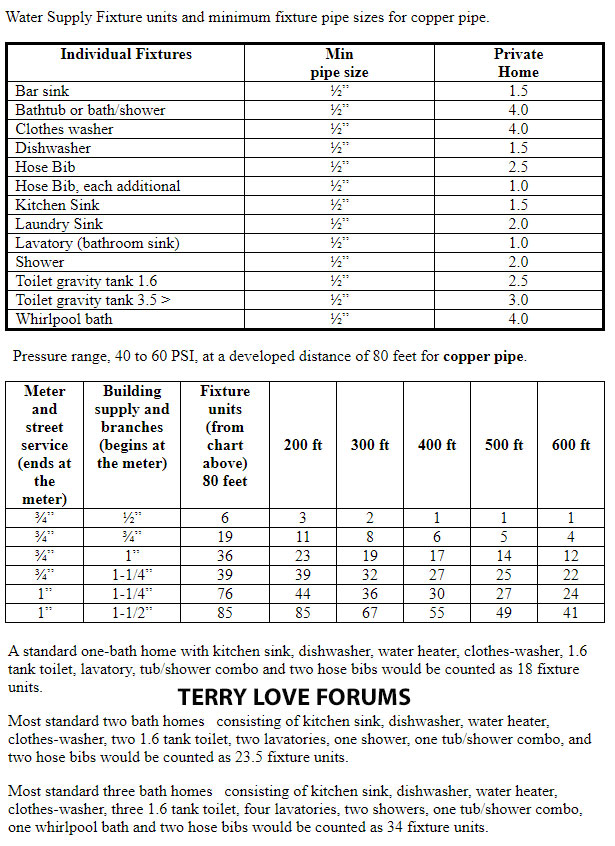DStyduhar
Member
Hi guys, sort of a general question here...
I planned to run 1" poly throughout the entire system (150 feet for well and 160 feet from well to house) but we since decided to add two yard hydrants (each 100ft from main line) and am now reconsidering the pipe size. Someone suggested increasing from 1" to 1.25" to keep the pressure drop low and now it got me thinking....
If 1" will suffice, what are the downsides (aside from $$) in increasing EVERYTHING to 1.25" since I have to buy new anyway? Or maybe keep 1" in the well and have larger pipe at the surface? I have seen a bunch of cases like that. We are in the 10-12GPM range.
Also, the pump we are looking at (10GPM 1HP) has a 1.25" outlet yet I see most folks on forums saying that they bushed and ran straight to 1" pipe. If this is so common why didn't just they make the pump with 1" outlet?
thanks,
Drew
I planned to run 1" poly throughout the entire system (150 feet for well and 160 feet from well to house) but we since decided to add two yard hydrants (each 100ft from main line) and am now reconsidering the pipe size. Someone suggested increasing from 1" to 1.25" to keep the pressure drop low and now it got me thinking....
If 1" will suffice, what are the downsides (aside from $$) in increasing EVERYTHING to 1.25" since I have to buy new anyway? Or maybe keep 1" in the well and have larger pipe at the surface? I have seen a bunch of cases like that. We are in the 10-12GPM range.
Also, the pump we are looking at (10GPM 1HP) has a 1.25" outlet yet I see most folks on forums saying that they bushed and ran straight to 1" pipe. If this is so common why didn't just they make the pump with 1" outlet?
thanks,
Drew

